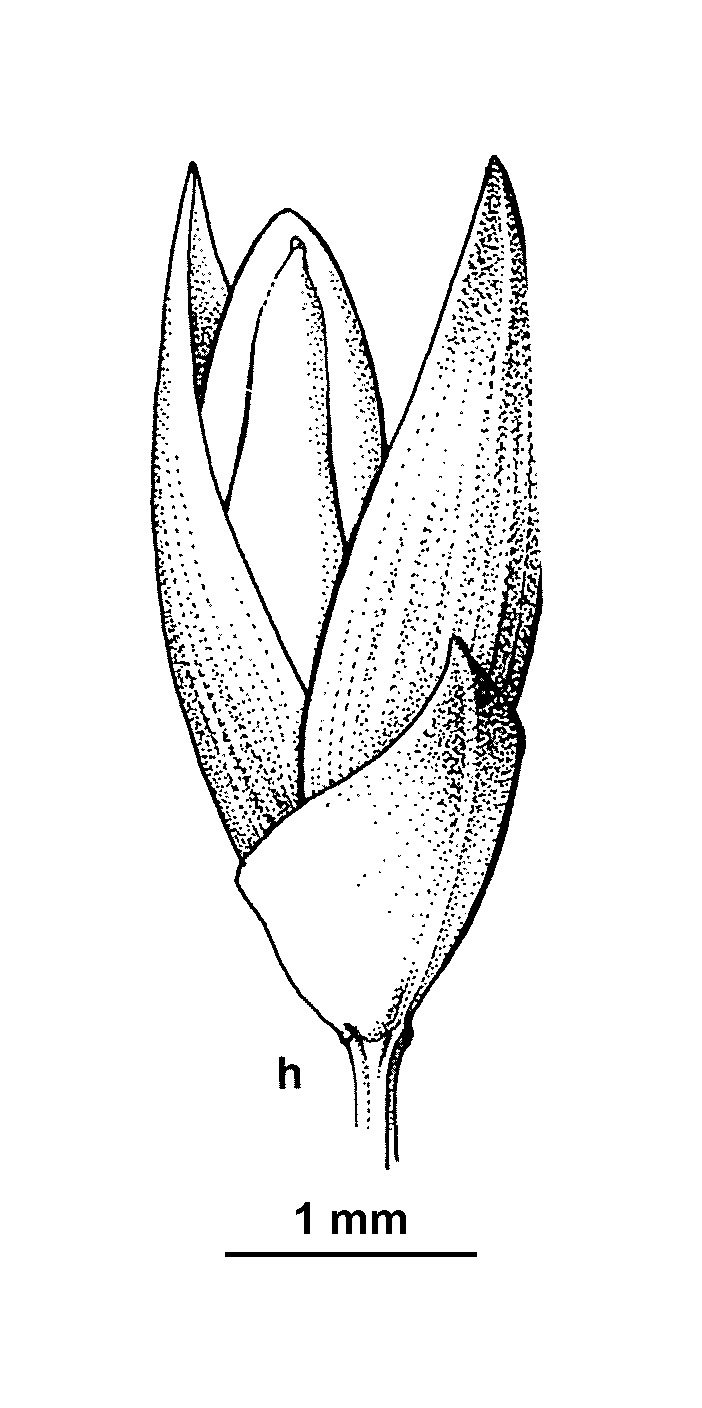Panicum coloratum
L. Coolah GrassShortly rhizomatous perennial. Culms erect, to 150 cm high, often branched in upper part; nodes glabrous or, rarely, hairy. Leaves glabrous or hairy; blade flat, to 30 cm long and 10 mm wide; ligule 0.5–2.5 mm long, glabrous or ciliate. Panicle shortly exserted at maturity, 7–25 cm long, with ascending to spreading primary branches, secondary branches remaining more or less appressed. Spikelets 2–3.3 mm long; lower glume weakly 1-nerved, obtuse, 0.7–1 mm long; upper glume 7–9-nerved, acute, as long as the spikelet; lemma of lower floret equal to upper glume; palea of lower floret acute, subequal to its lemma; fertile lemma acute, slightly shorter than spikelet, hard, shining, dorsally rounded, strongly recurved at margins and largely overlapping palea; palea subequal to lemma, nearly flat. Flowers Feb.–Apr.
MuM, VRiv, RobP, MuF, HSF, VAlp. Also naturalised in WA, NSW. Indigenous to tropical Africa, widely planted as fodder and naturalised in many countries. In Victoria, largely confined to the Murray-Goulburn irrigation districts (e.g. Mooroopna, Yarrawonga, Corryong), with isolated records from the far north-west at Colignan near Mildura. Likely to occur between the latter locality and Echuca, but not yet reported from that part of the Murray.
Panicum schinzii, also native to Africa, resembles P. coloratum in most floral features but differs from it in its scabrous (rather than smooth) leaf margins and annual life cycle. The name P. schinzii has in the past been erroneously used in Victoria for P. gilvum.
Walsh, N.G. (1994). Poaceae. In: Walsh, N.G.; Entwisle, T.J., Flora of Victoria Vol. 2, Ferns and Allied Plants, Conifers and Monocotyledons, pp. 356–627. Inkata Press, Melbourne.
 Spinning
Spinning


